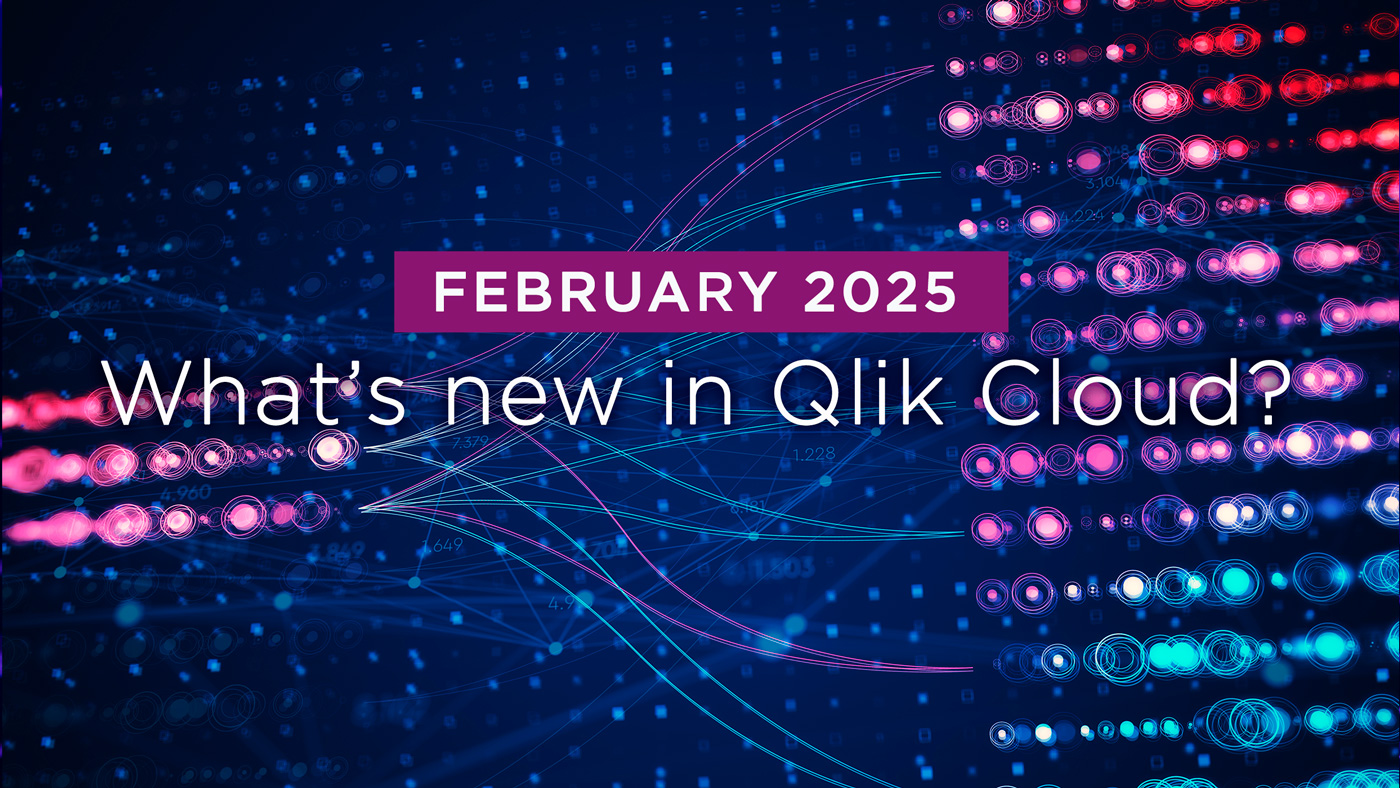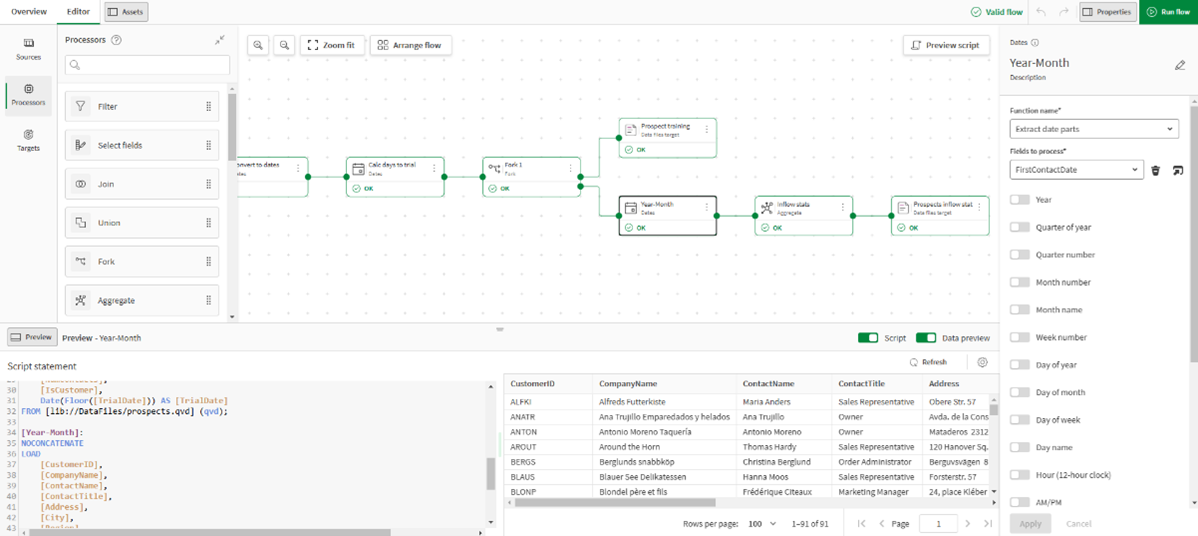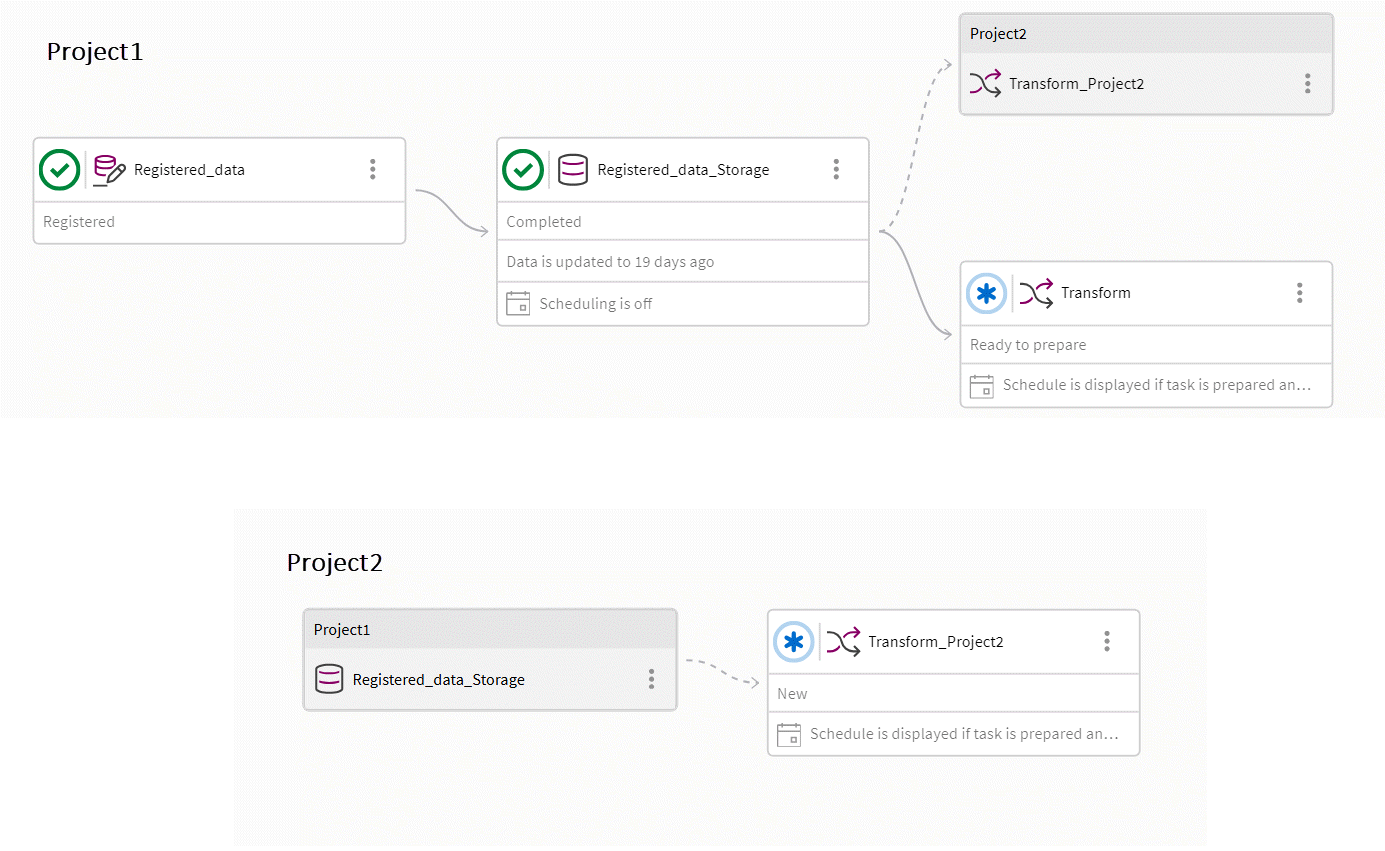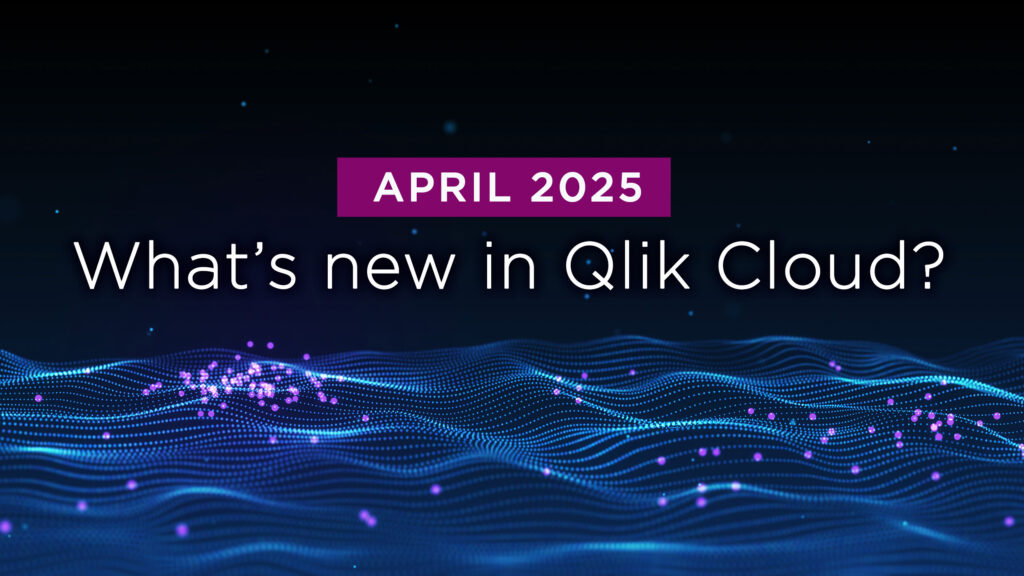
What’s New in Qlik Cloud
– February 2025 Updates –
Welcome to the next edition of the ‘What’s New in Qlik Cloud’ blog for February 2025!
Authors: Roger Gray, BI Manager & Tom Cotterill, BI Consultant, at Climber.
Data Analytics
Qlik continues to push the boundaries of data analytics and automation with a fresh set of updates designed to enhance efficiency, flexibility, and user experience. From a shift in Qlik Application Automation packaging to the introduction of Custom Groups and no-code Data Flow capabilities, these enhancements promise to elevate how organisations interact with data and streamline their workflows. Let’s explore the latest innovations.
1. Data Flow: No-Code Data Preparation for AI & Analytics
Qlik Cloud Analytics now features Data Flow, a native no-code solution for data preparation, making it easier to shape, cleanse, and process datasets for analytics and machine learning. This innovation aligns with a broader need across industries to expand access to analytics and AI capabilities.

Key Features & Benefits:
- Visual Editor: Drag-and-drop interface for creating data preparation flows. Data can be loaded from your data catalog or data connection sources and output to files in QVD and Parquet formats. Making this data ready for consumption into analytics or AutoML applications.
- No-Code Processing: Pre-built functions for data manipulation and transformation. Enabling the data to be reshaped to your application requirement through joins, aggregations and filtering. The data can be embellished with string, number, data, and other cleansing functions.
- Data Preview: Validate data output at each step in real-time.
- Script Generation: Auto-generate Qlik scripts with transparency and the ability to convert the data flow into a script enabling customisation options.
- Platform Integration: Fully embedded within Qlik Cloud for governance, collaboration, and scheduling.
By enabling a wider range of users to prepare high-quality, AI-ready data, Qlik is helping organisations reduce dependency on IT resources, accelerate time to insight, and ensure data accuracy, consistency, and governance.
2. Qlik Application Automation: Transition to Third-Party Runs
Qlik introduces the concept of third-party runs in Qlik Application Automation, marking the first step toward a new packaging strategy. In this shift, standard runs will become free, and third-party runs will be the primary focus.
Key Benefits:
- Cost Efficiency: Users can leverage standard runs at no cost.
- Improved Scalability: Third-party runs ensure robust automation handling with external integrations.
- Future-Proofing: A streamlined approach to automation aligns with evolving enterprise needs.
3. Direct Access Gateway: Performance & Connectivity Boosts
The Direct Access Gateway 1.7.0 update introduces:
- New File Connector: A long-awaited solution to securely stream data from file systems directly into Qlik Sense. Finally, Qlik Data Transfer should can be laid to rest!
- Async Command Support: Enhances efficiency by enabling simultaneous command execution, reducing processing time.
These updates provide greater flexibility, improved performance, and enhanced automation capabilities to empower Qlik users worldwide.
4. Custom Groups: Enhanced User and Access Management
Enterprise customers can now take advantage of Custom Groups, a new feature that provides greater control over user and group management within Qlik Cloud. Organisations that do not rely on Identity Provider (IdP) groups can now create and maintain user groups directly in Qlik Cloud.
Use Cases Solved:
- Public Sector Flexibility: Simplify access control by managing group memberships directly within Qlik Cloud.
- Enterprise Autonomy: Remove dependency on IT-managed Active Directory groups for more agile access management.
- Embedded Analytics: Use Custom Groups with qlik-embed and OAuth2 Machine-to-Machine impersonation for seamless REST API-based group handling.
With enhanced usability and autonomy, Custom Groups simplify access management, aligning with organisational structures and security needs.
5. Advanced Edit Mode: Improved Assets Panel
The assets panel in advanced edit mode has been redesigned for an improved look and feel, making it more intuitive and user-friendly.
6. Native Support for Regular Expressions (Regex)
Qlik Cloud Analytics now includes native regex support for load scripts and chart expressions, enhancing data transformation capabilities. Users can now:
- Identify email addresses
- Validate data formats
- Standardise text-based data more efficiently
7. ML Deployment UI Improvements
Qlik AutoML now offers a more streamlined experience for generating batch predictions from ML deployments, ensuring better usability and efficiency.

Data Integration
The latest updates in Qlik Cloud enhance:
- Pipeline flexibility
- Automation
- AI-driven transformations
- Snowflake connectivity
Cross-project pipelines in Qlik Talend Cloud now allow teams to split complex workflows across multiple projects, improving organisation and collaboration.
Users can now transfer ownership of data projects to ensure continuity when roles change.
Snowflake Cortex AI functions bring sentiment analysis, text summarisation, translation, and data classification directly into transformation flows.
Additionally, advanced ODBC & JDBC properties in the Snowflake target connector provide more granular control over connections and permissions.
For full details, check out the Qlik Help Centre links provided in each section below.
1. Cross-Project Pipelines: New Approach to Pipeline Design
Managing complex data pipelines just got easier. Qlik Talend Cloud now supports cross-project pipelines, allowing data teams to build and manage pipelines across multiple projects. This enhances pipeline flexibility, fosters collaboration, and aligns with Data Mesh principles by enabling teams to:
- Segregate pipelines by data domain for better organisation.
- Modularise ingestion and transformation tasks for easier management.
- Improve cross-team collaboration through shared, flexible pipeline structures.
With this capability, complex data integration workflows become more manageable, offering greater control over project design. Since dependencies are referenced rather than named, renaming tasks won’t break their references, ensuring seamless pipeline evolution.

To get started, create a new project, select the Use data from existing project option.
For more information, please visit this link.

2. Changing Owner of a Data Project
Qlik now allows users to transfer ownership of a data project to another user, ensuring seamless continuity of tasks and datasets. This feature is particularly useful in scenarios where:
- A project owner leaves the organisation or their account is deleted.
- Responsibility for a project changes between teams or departments.
By reassigning ownership, all associated tasks and datasets remain intact under the new owner, preventing disruptions in data workflows and maintaining control over ongoing processes. This update improves administrative flexibility, governance, and operational resilience within Qlik environments.
3. AI-Powered Transformations in Snowflake with Qlik
Qlik’s AI Processor now supports Snowflake Cortex AI functions, bringing powerful generative AI capabilities directly into transformation flows. This integration enables automated, intelligent data processing within Snowflake, unlocking four cutting-edge AI functions:
- Sentiment Analysis: Understand the tone of text data at scale.
- Data Classification: Automatically categorise and label data for better organisation.
- Text Summarisation: Condense large text fields into concise insights.
- Translation: Seamlessly convert text between languages for global accessibility.
This marks a major leap in intelligent data transformation, empowering users to enrich, classify, and analyse data within their Snowflake environment, all without needing external AI services.
For more information please see Qlik’s AI processor information.
4. Enhanced Snowflake Connection Control in Qlik
The Snowflake target connector for data replication and pipelines now supports additional ODBC & JDBC connection properties. This gives users greater control over connection configurations, allowing for fine-tuned adjustments beyond standard parameters, including:
- Role & Secondary Role: Manage access and permissions more precisely.
- Custom Connection Properties: Optimise performance, security, and compliance.
- Greater Flexibility: Adapt Snowflake connections to meet specific project needs.
This update ensures more configurable and scalable Snowflake integrations, with additional connectors planned for future releases.
For more important information in this topic including permissions please visit the Additional connection properties page.

Summary
With these latest enhancements, Qlik Cloud continues to innovate and empower organisations with more efficient automation, improved data preparation tools, and streamlined access management. Whether it’s through the new Data Flow feature, Custom Groups, or the expansion of regex and automation capabilities, these updates offer powerful ways to optimise workflows and elevate data analytics strategies.
SUBSCRIBE
Want to stay up to date with the latest features that are released in Qlik Cloud?
Subscribe to our blog and get monthly updates directly to your inbox.
WANT TO KNOW MORE? CONTACT US!
Magnus Petersson-Ahrholt
BI Manager
magnus.petersson-ahrholt@climber.se
+46 70 830 27 35
Thomas Christian
Business Relationship Manager
thomas.christian@climber.se
+46 72 401 47 47
News

People and Data Literacy in the age of AI
Welcome to join our webinar on 7th May to learn how to strengthen data literacy within your organisation and build a culture where data and AI support people’s expertise — instead of replacing it.
>> Register now
What’s New in Qlik Cloud – Apr 2025
Qlik continues to roll out a comprehensive set of updates across the platform – from workflow automation, machine learning improvements, charting enhancements, new scripting tools, and expanded global coverage.
>> Read more
Alla vill jobba datadrivet, men gör vi verkligen det?
Att arbeta datadrivet är idag en självklarhet – något som förväntas av de flesta chefer. Men hur många har egentligen fått utbildning i vad det innebär? Vi samlar data och sätter KPI:er, men vet vi verkligen hur vi använder dem för att fatta bättre beslut?
>> Läs mer här!
